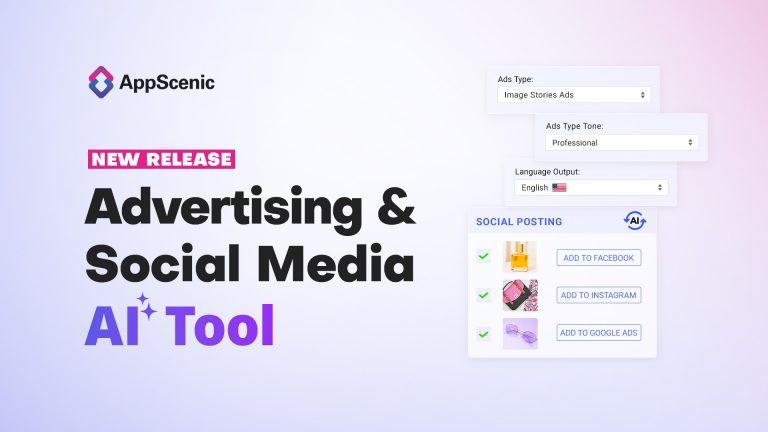In such a competitive world as the ecommerce one, the success of your dropship store depends a lot on many variables. How well you showcase your products is one of the aspects that can make or break your store. Engaging product descriptions and high-quality images are crucial not just for making your store look good, but also for converting visitors into loyal customers.
Let’s explore what stands behind the art of creating amazing product descriptions and captivating images that will make your dropship store stand out.
Table of Contents
The power of product descriptions
A well-written product description should do more than list the main features, it should tell a story that resonates with your audience. A one-of-a-kind description and title need to convince potential buyers why they need your product. Here are some of the aspects you need to think about when writing that perfect description.
Know your audience
Understanding your target audience is the first step to writing effective product descriptions. Who are they? What are their needs, desires, and pain points? Knowing your audience is like having a map for a journey, it guides your writing and ensures your message hits the mark.
Focus on benefits, not just features
While features are important, customers are more interested in how a product will benefit them. How can your product make their life better? For instance, instead of just stating that a blender has a 1000-watt motor, explain that it can blend tough ingredients into a smooth puree in seconds, making meal prep faster and easier. Highlighting benefits in this way gives customers a reason to embark on the journey that is your store.
Tell a story
Stories create emotional connections. Instead of just listing a product’s features, immerse them into a story. For example, for an outdoor camping tent, you might say, “Imagine a serene night under the stars, the gentle rustle of leaves as you drift off to sleep in your ultra-comfortable, weather-resistant tent.” Storytelling transforms your product into an experience.
Use sensory language
Engage your customers’ senses by using descriptive language that evokes sight, sound, taste, touch, and smell. For example, if you’re selling a scented candle, don’t just say it smells like vanilla. Describe it as “a warm, comforting perfume that fills your home with a cozy, inviting atmosphere.” Sensory language is just like adding a color to your sketch, it makes your descriptions vivid and appealing.
Keep it simple and concise
While storytelling is important, clarity should never be sacrificed. Avoid jargon and complex sentences. Aim for descriptions that are easy to read and understand. Simple, concise writing is like a clear road sign, it guides customers without confusing them.
Incorporate keywords naturally
We all know how crucial is SEO (Search Engine Optimization) for visibility and attracting potential buyers. Make sure you optimize for search engines to improve your search rankings but try to incorporate relevant keywords naturally into your descriptions. Beware of keyword stuffing, it’s like overloading your house with too many things. Balance is key.
Read more: How SEO can push a dropshipping business to the next level
The art of stunning product images
High-quality images are just as essential as product descriptions for showcasing your products. Why? Well, they are often the first thing customers notice and can significantly influence their buying decisions. Here are some of the steps you need to follow to create stunning product images.
Use high-resolution images
Blurry or pixelated images can turn customers away. Use high-resolution images that clearly showcase your product from different angles. High-quality images are like crystal-clear windows, they give customers a transparent view of what they’re buying.
Show multiple angles and details
Provide multiple images that show your product from various angles and highlight important details. This gives customers a comprehensive view and helps them make informed decisions. Multiple angles are like a 360-degree tour, they leave no room for doubt.
Include contextual photos
Contextual photos show the product in use. For example, if you’re selling a coffee maker, include images of it brewing a fresh pot of coffee in a cozy kitchen setting. Contextual photos can help customers visualize how the product fits into their lives.
Use consistent lighting and backgrounds
Consistency in lighting and backgrounds creates a uniform look for your store. Use natural lighting when possible and opt for clean, uncluttered backgrounds that keep the focus on the product. Consistent visuals can enhance your store’s overall aesthetic.
Highlight key features
Use close-up shots to highlight key features or unique aspects of your product. This attention to detail can set your product apart from competitors. Close-up shots can help you zoom in on what makes your product special.
Include lifestyle images
Lifestyle images show the product in a setting that evokes a certain mood or style. For example, if you’re selling fitness gear, show someone using the equipment in an energetic, motivational setting, such as a gym. These mages can capture a lifestyle that customers aspire to.
Combining descriptions and images for maximum impact
The synergy between product descriptions and images can significantly boost your store’s appeal. When these elements work together, they create a story, one that’s compelling and persuasive. Here’s more on how you can make that happen.
Create a cohesive narrative
Ensure that your descriptions and images tell the same story. If your description highlights the luxury of a product, make sure the images convey that same sense of luxury. Consistency in storytelling creates a seamless experience.
Use captions and callouts
Add captions and callouts to your images to highlight important features or benefits. This can draw attention to key selling points and provide additional context. Captions can work just like informative signs, providing helpful insights at a glance.
Prioritize mobile optimization
Many customers shop on their mobile devices, so make sure that your product descriptions and images are optimized for mobile too. This means using responsive design and ensuring that images load quickly and look good on smaller screens.
Test and iterate
Regularly test different versions of your product descriptions and images to see what resonates best with your audience. Use analytics to track performance and make data-driven decisions. So, tweak them until these are just right.
Case study: Transforming a dropship store
Now, let’s look at a hypothetical case study to illustrate the impact of engaging product descriptions and images.
The challenge
“GlamourGadgets” is a dropship store specializing in tech accessories. Despite having high-quality products, they struggled with low conversion rates. Their product descriptions lacked that spark, and their images were inconsistent and unappealing.
The transformation
- Revamped descriptions: They rewrote their product descriptions, focusing on benefits, using sensory language, and incorporating storytelling elements. For example, instead of saying “portable charger,” they described it as “your sleek, on-the-go power solution that ensures you’re never caught with a dead phone battery during important moments.”
- Upgraded images: They invested in high-resolution images, showing products from multiple angles, highlighting key features, and including lifestyle shots. For their portable charger, they included images of it being used at a café, at the airport, and during a hike.
- Consistent presentation: They standardized the lighting and background for all their images, creating a consistent and professional look.
- Mobile optimization: They ensured their descriptions and images were mobile-friendly, improving the user experience for mobile buyers.
The outcome
Within three months, GlamourGadgets saw a significant increase in conversion rates. Customer engagement improved, and they received positive feedback on the clarity and appeal of their product presentations.
Automate your product descriptions and images with AI tools
AppScenic now includes AI tools that can help you manage and automate your stores more efficiently. These innovative AI tools can optimize your product pages, descriptions, images, and SEO with just a few clicks. Our product AI tools can help you create compelling product titles and descriptions while improving product images effortlessly.
Read more: AI for dropshipping
Conclusion
Creating engaging product descriptions and images is both an art and a science. You need to have a deep understanding of your audience, be creative, and commit to quality and consistency.
Now, by focusing on the elements we just went through, you can definitely create a dropship store that not only attracts visitors but also converts them into loyal customers.
Read next: Tips for selecting a web developer for your new dropshipping store













